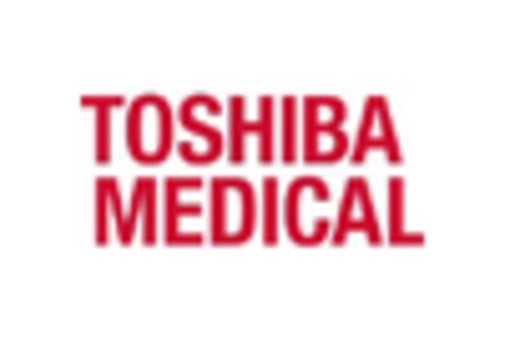Rising Awareness and Education
Increased awareness and education regarding spinal health are pivotal in shaping the spinal cord-compression-spinal-stenosis market. Campaigns aimed at educating the public about the symptoms and risks associated with spinal stenosis have led to earlier diagnosis and treatment. Healthcare professionals are increasingly emphasizing the importance of recognizing early signs, which can significantly improve patient outcomes. This heightened awareness is reflected in a 15% increase in consultations for spinal issues over the past year. Consequently, the spinal cord-compression-spinal-stenosis market is experiencing a surge in demand for both diagnostic tools and treatment options, as patients seek timely interventions to manage their conditions.
Government Initiatives and Funding
Government initiatives aimed at improving healthcare infrastructure are significantly impacting the spinal cord-compression-spinal-stenosis market. In Spain, increased funding for spinal health programs and research has been observed, with the government allocating €50 million towards spinal health initiatives in the last fiscal year. These investments are directed towards enhancing treatment facilities, training healthcare professionals, and promoting research into innovative therapies. Such initiatives not only improve patient access to care but also stimulate growth within the spinal cord-compression-spinal-stenosis market, as new treatment options and technologies emerge from funded research projects. The ongoing support from governmental bodies is likely to sustain market expansion in the coming years.
Advancements in Surgical Techniques
Innovations in surgical techniques are transforming the spinal cord-compression-spinal-stenosis market in Spain. The introduction of advanced minimally invasive procedures has led to shorter recovery times and reduced hospital stays, appealing to both patients and healthcare providers. For instance, techniques such as endoscopic spine surgery have gained traction, allowing for effective decompression of the spinal canal with minimal tissue disruption. This shift not only enhances patient outcomes but also reduces overall healthcare costs, as evidenced by a reported 30% decrease in post-operative complications. As these advancements continue to evolve, they are likely to drive further growth in the spinal cord-compression-spinal-stenosis market, attracting investment and research into new methodologies.
Aging Population and Increased Incidence
The aging population in Spain is a significant driver for the spinal cord-compression-spinal-stenosis market. As individuals age, the likelihood of developing spinal stenosis increases due to degenerative changes in the spine. Current statistics indicate that approximately 20% of individuals over 65 years experience some form of spinal stenosis, leading to heightened demand for diagnostic and therapeutic interventions. This demographic shift necessitates a robust healthcare response, including surgical and non-surgical treatment options. The spinal cord-compression-spinal-stenosis market is thus poised for growth as healthcare providers adapt to the needs of an older population, focusing on effective management strategies to alleviate symptoms and improve quality of life.
Technological Integration in Diagnostics
The integration of advanced technologies in diagnostic procedures is a crucial driver for the spinal cord-compression-spinal-stenosis market. Innovations such as MRI and CT imaging have revolutionized the ability to accurately diagnose spinal stenosis, allowing for more precise treatment planning. In Spain, the adoption of these technologies has increased by approximately 25% in recent years, facilitating earlier detection and intervention. This trend not only enhances patient care but also drives market growth as healthcare facilities invest in state-of-the-art diagnostic equipment. As technology continues to advance, the spinal cord-compression-spinal-stenosis market is likely to benefit from improved diagnostic accuracy and efficiency.




















Leave a Comment